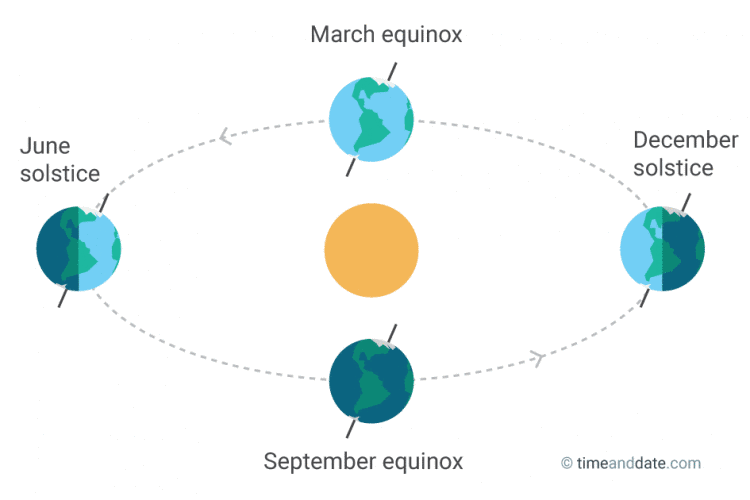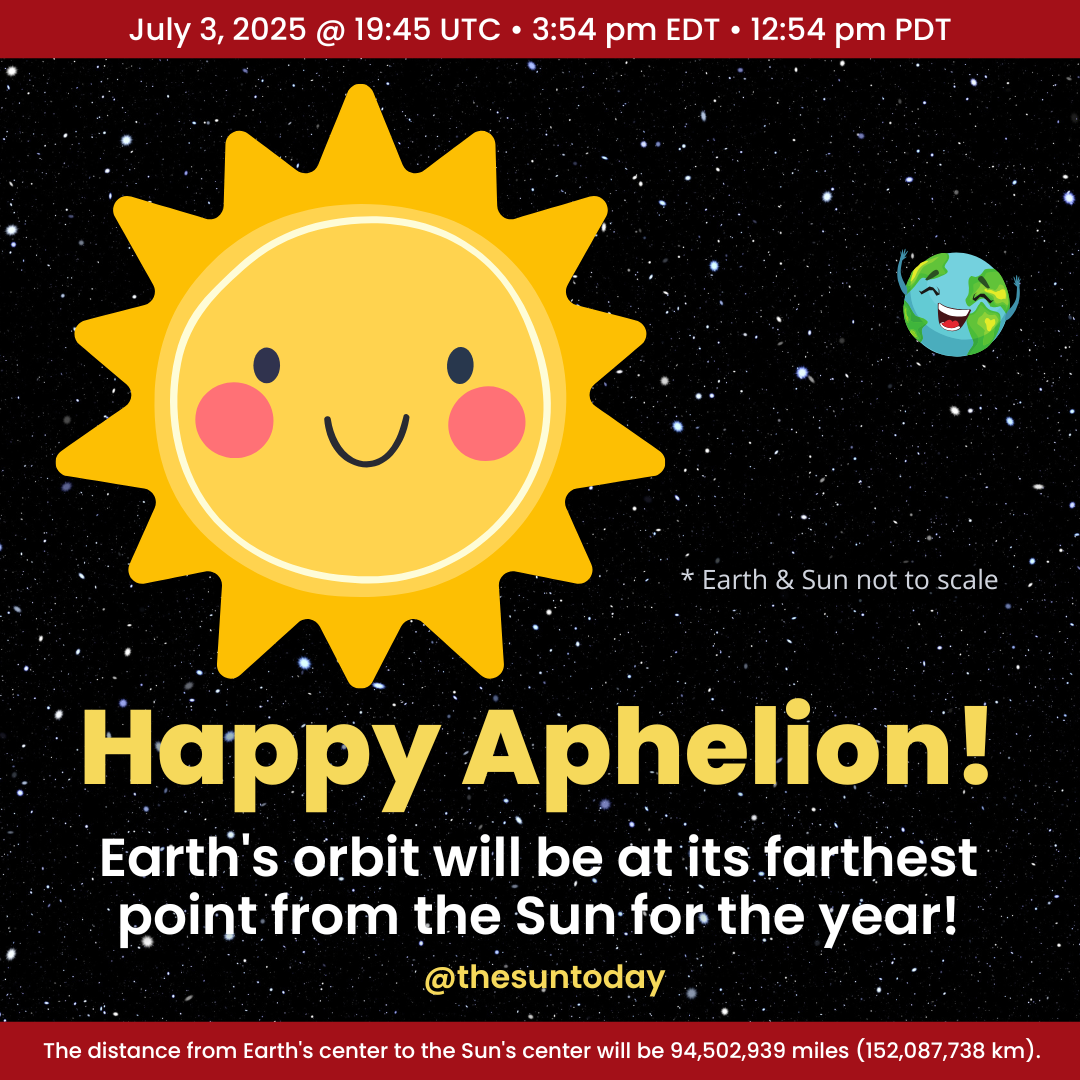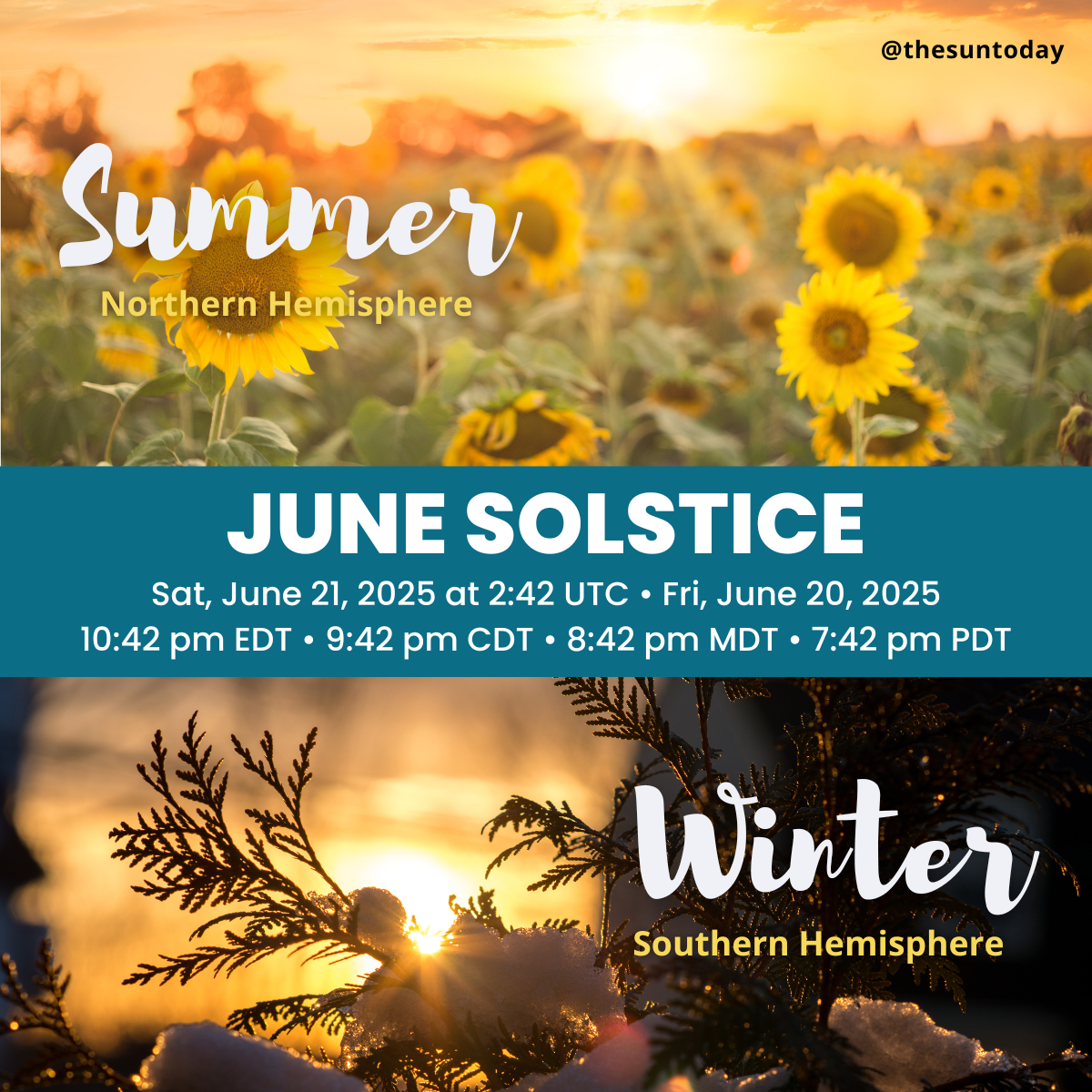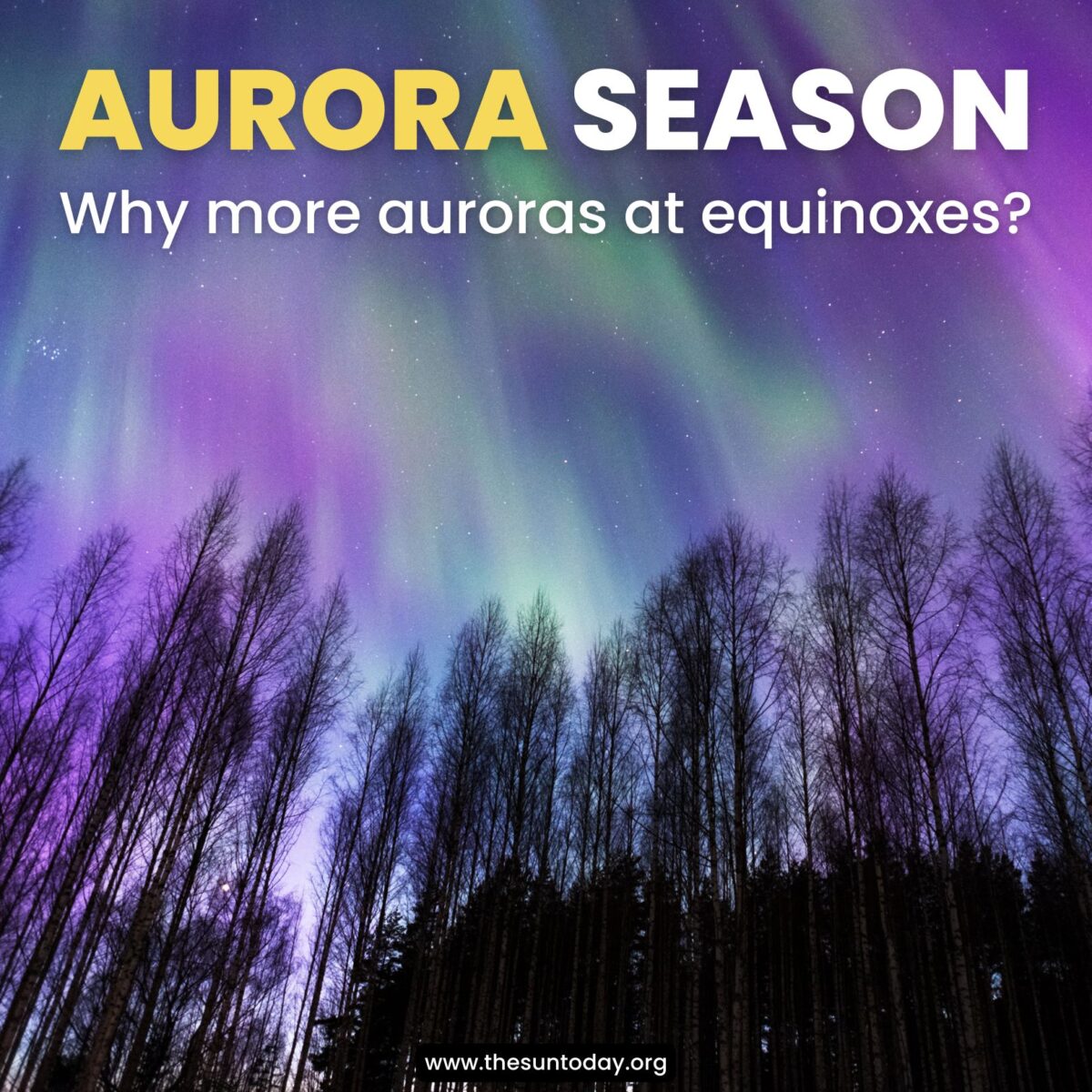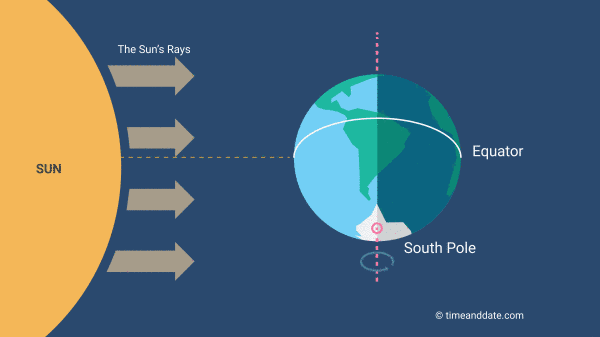
A new season is upon us—the Autumnal or September Equinox of 2020!
This marks the beginning of fall for the Northern Hemisphere and the beginning of spring for the Southern Hemisphere. The change happens at 9:30 a.m. EDT (1330 UTC/GMT) on Tuesday, September 22.
But what is the equinox exactly?
The astronomical event, known as an equinox, occurs twice each year around March 20th and September 23rd, when the plane of Earth’s equator passes through the center of the sun.
Not Entirely Equal Day & Night
On an equinox, the Sun shines directly on the equator and the length of day and night is nearly equal – but not quite. They are not exactly equal because the angular size of the sun and atmospheric refraction. The word equilux is used to mean a day in which the durations of light and darkness are equal to distinguish the day from an equinox.
The March equinox marks the moment the Sun crosses the celestial equator – the imaginary line in the sky above the Earth’s equator – from south to north and vice versa in September. The equinoxes are the only times when the solar terminator (the dividing line between night and day) is perpendicular to the equator. Then the northern and southern hemispheres are equally illuminated.
Equinoxes are the only times when the subsolar point is on the equator, i.e. the Sun is exactly overhead at a point on the equatorial line. The subsolar point crosses the equator moving northward at the March equinox and southward at the September equinox.
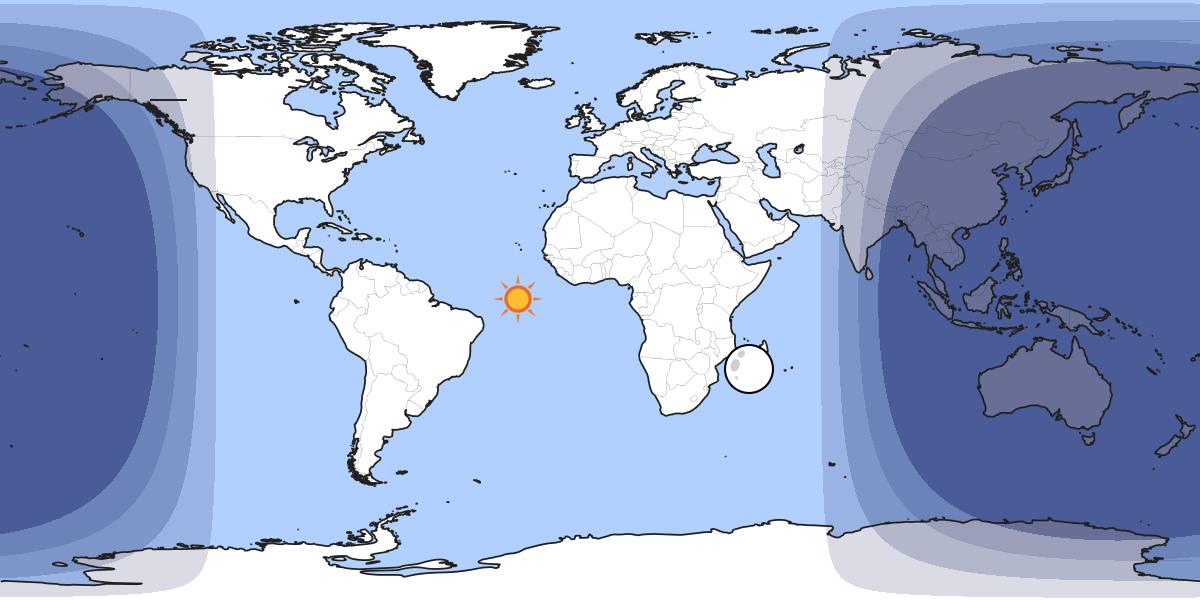
The map below shows the position of the Sun and the Moon during the September 22, 2020 equinox (at 13:30 UCT.) It shows which parts of the Earth are in daylight and which are in night. credit: www.timeanddate.com
![]() = The Sun’s position directly overhead (zenith) in relation to an observer.
= The Sun’s position directly overhead (zenith) in relation to an observer.
![]() = The Moon’s position at its zenith in relation to an observer (Moon phase is not shown).
= The Moon’s position at its zenith in relation to an observer (Moon phase is not shown).
Civil Twilight = lightest shade
Night, no twilight = darkest shade
The equinoxes and solstices, are directly related to the seasons of the year. In the northern hemisphere, the vernal equinox (March) conventionally marks the beginning of spring while the autumnal equinox (September) marks the beginning of autumn. In the southern hemisphere, the vernal equinox occurs in September and the autumnal equinox in March.
We can even see how the sun illuminates Earth during equinoxes and solstices thanks to NASA satellites.
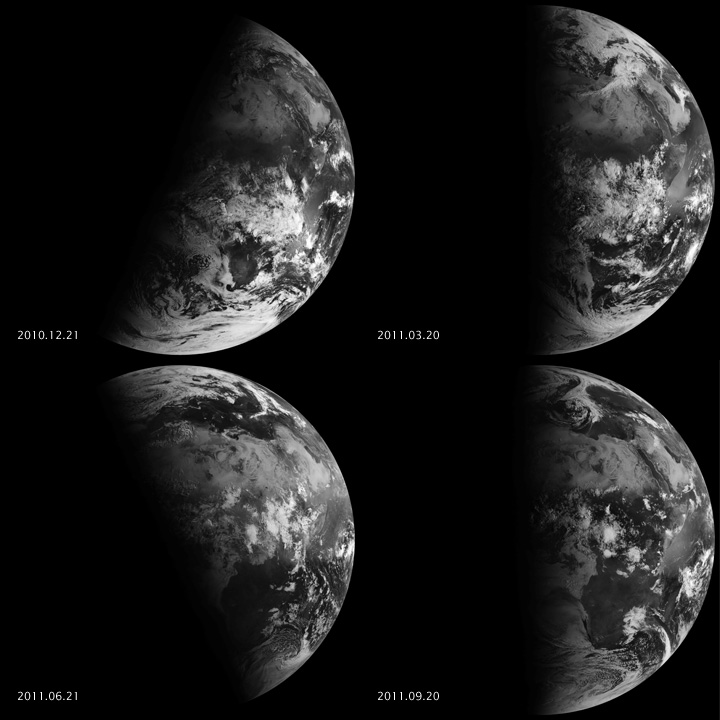
The Spinning Enhanced Visible and Infrared Imager (SEVIRI) on EUMETSAT’s Meteosat-9 captured these four views of Earth from geosynchronous orbit. The images show how sunlight fell on the Earth on December 21, 2010 (upper left), and March 20 (upper right), June 21 (lower left), and September 20, 2011 (lower right). Each image was taken at 6:12 a.m. local time.
This video shows what the equinox on Planet Earth looks like from space.
At an equinox Earth’s terminator—the dividing line between day and night—connects the planet’s north and south poles as seen at the start of this remarkable time-lapse video compressing an entire year into twelve seconds.
To make it, the Meteosat satellite recorded these infrared images every day at the same local time from a geosynchronous orbit. The video actually starts at the September 2010 equinox with the terminator aligned vertically.
As the Earth revolves around the Sun, the terminator tilts to provide less daily sunlight to the northern hemisphere, reaching the solstice and northern hemisphere winter at the maximum tilt.
As the year continues, the terminator tilts back again and March 2011 equinox arrives halfway through the video. Then the terminator swings past vertical the other way, reaching the June 2011 solstice and the beginning of northern summer. The video ends as the September equinox returns.
Video Image Credit: NASA, Meteosat, Robert Simmon
Credit: NASA/www.timeanddate.com/www.wikipedia.org


